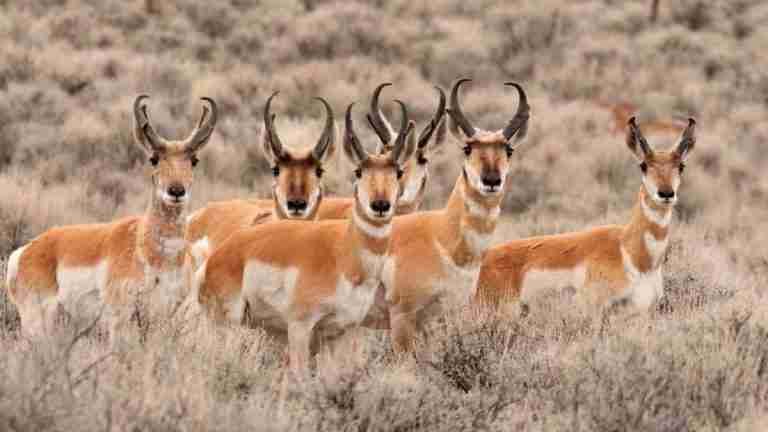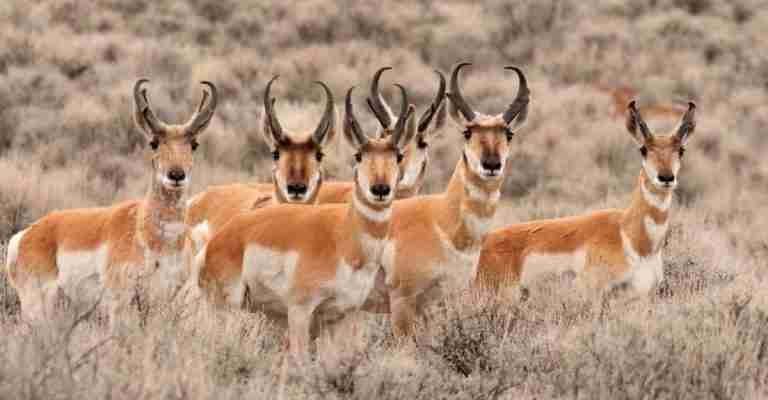
Antelopes belong to the Bovidae family, which includes a variety of species, each with unique eating habits and clever hunting strategies—or, more accurately, evasion strategies. In this article, we’ll explore what antelopes eat, how they find their food, and the fascinating ways they evade predators. Grab a seat, and let’s dive into the wild world of these amazing animals.
Understanding Antelope Diets
Antelopes are primarily herbivores, which means they feast on plant life to satisfy their nutritional needs. Their diets usually consist of a mix of grasses, leaves, flowers, and occasionally fruits. Depending on the species and their habitat, their preferences can vary quite a bit.
For example, the Grant’s gazelle loves munching on tender grass during the wet season, while the kudu might prefer browsing on shrubs and trees when food variety is limited. It’s like a buffet out in the wild, and these animals know how to pick the best dishes! Here’s a breakdown of what they typically enjoy:
- Grasses: The staple of most antelopes, especially in open savanna areas.
- Shrubbery: Many antelopes will graze around the bases of trees to find tasty leaves and tender shoots.
- Fruits and Flowers: Occasionally, they’ll indulge in fruits or flowers when available, adding a tasty treat to their diet.
Understanding their diet is essential, as it helps us appreciate their role in the ecosystem. Antelopes are crucial for seed dispersal, helping plants thrive and creating a balanced environment.
How Antelopes Choose Their Food
Antelopes have evolved unique ways to find their food. They’re not just mindlessly munching; they’re clever foragers. Their keen sense of smell is one of their secret weapons. This ability allows them to detect fresh vegetation from quite a distance. Picture yourself walking through a park, and you catch a whiff of freshly baked bread—it’s that kind of instinct!
Another interesting aspect is their social behavior. Some species, like the impala, like to graze in groups. This not only helps them find food more efficiently but also gives them extra eyes on the lookout for predators. It’s kind of like having a roommate who helps you spot the best snacks in a crowded pantry.
They also exhibit something called selective grazing. This means they know how to pick the most nutritious parts of plants while avoiding those that might be tough or less tasty. This strategy maximizes their survival, keeping them healthy and agile.
Antelope’s Evasion Techniques
Evading predators is a full-time job for antelopes! To stay alive, they’ve developed some remarkable strategies. Their speed is one of their greatest assets. Many antelopes can reach speeds up to 50 miles per hour in short bursts, making it hard for predators like lions or cheetahs to catch them. Imagine being on a bike and suddenly racing at full speed—this agility helps ensure their survival.
Another fascinating strategy is their ability to make sharp turns and jumps. If a predator is closing in, an antelope can change direction in an instant, using its strong legs to leap over obstacles. Have you ever tried to dodge someone chasing you in a game of tag? Antelopes do that for real!
Lastly, vigilance plays a big role in their survival. They often take turns watching for threats while others feed. This teamwork allows them to enjoy their meal without constantly worrying about becoming dinner themselves.
Species-Specific Hunting and Foraging Behavior
Not all antelopes are created equal when it comes to their hunting and foraging behaviors. Different species have adapted their strategies to suit their environments and available food sources. Here’s a closer look:
The Thompson’s Gazelle
This agile little antelope is known for its incredible speed and endurance. Thompson’s gazelles often graze on grasslands, sticking close to water sources. They have a knack for sensing danger, making them quick to bolt at the first sign of a predator.
The Eland
The largest of the antelope family, elands, have a slightly different approach. They use their height to their advantage, browsing on shrubs and trees that smaller antelopes can’t reach. Because of their size, they can be somewhat less concerned about predators, although they can still run fast when needed.
The Springbok
Famous for their stunning jumps, springboks often forage in open areas. They can leap up to 10 feet in the air. This not only helps them escape but also serves as a way to communicate with other springboks. Their impressive leaps draw attention and signal that it’s time to be alert.
Understanding these species-specific behaviors is essential for appreciating the diversity of antelope life and how they adapt to their surroundings.
The Role of Antelopes in Their Ecosystem
Antelopes play a critical role in maintaining the balance of their ecosystems. By grazing on grasses and shrubs, they help control plant growth, which can prevent overgrowth and promote healthier vegetation. It’s like having a natural lawnmower!
Moreover, they are an essential food source for many predators. The presence of antelopes can help sustain populations of large carnivores, creating a dynamic balance in nature. It’s a bit of a food chain dance, where everyone has a part to play.
Antelopes also contribute to seed dispersal through their droppings. When they eat fruits and veggies and later excrete the seeds, they help plants grow in new areas, further enriching their environment. They are nature’s little gardeners, moving seeds around and promoting biodiversity.
Threats to Antelope Populations
Despite their incredible adaptations, antelopes face numerous threats that can impact their populations and survival. Habitat loss is one of the most significant challenges. As human development expands, natural habitats are destroyed or fragmented, making it harder for antelopes to find food and safe places to live.
Poaching is another critical issue. Many antelope species are hunted for their meat and horns. This illegal hunting places immense pressure on populations, leading to declines in numbers. Consider it like having your favorite local café shut down—less access means fewer choices.
Additionally, climate change poses challenges by altering their habitats. Changes in rainfall patterns and temperatures can affect food availability, pushing antelopes to adapt quickly to survive. It’s a tough world out there, and these animals must constantly navigate through challenges.
Conservation Efforts for Antelopes
Fortunately, various organizations and conservationists are working tirelessly to protect antelope populations. Creating protected areas, like national parks, helps preserve natural habitats and allows antelopes to thrive without the threat of human encroachment.
Rehabilitation projects aim to restore habitats that have been damaged by development or agriculture. This restoration process is crucial for ensuring antelopes have access to their natural food sources and safe spaces to roam.
Many wildlife reserves and conservation projects also focus on anti-poaching measures. These initiatives employ rangers to patrol areas and educate local communities about the importance of protecting wildlife. By providing jobs and promoting ecotourism, these efforts can create a win-win situation for both people and antelopes.
In conclusion, antelopes are more than just beautiful creatures—they are vital parts of our ecosystems with intriguing diets and survival strategies. By understanding their habits and the challenges they face, we can better appreciate these remarkable animals and contribute to their conservation. So next time you hear about antelopes, think of the grand dance of life they perform on the savanna, ever aware of their surroundings and always in search of delicious greens.

